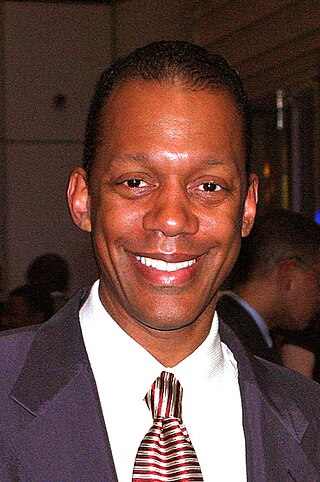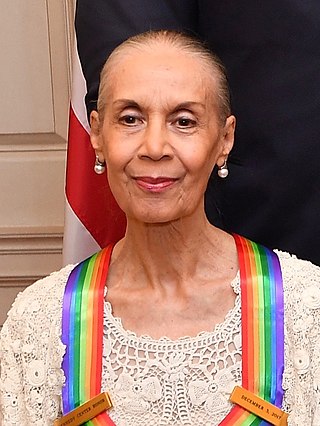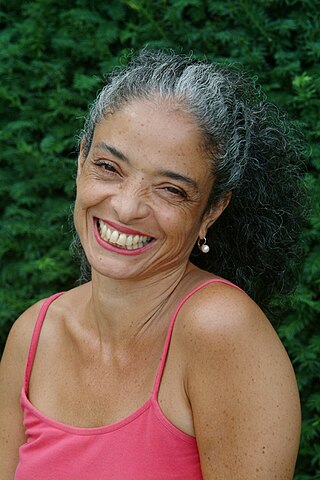
Modern dance in the United States is a form of contemporary dance that was developed in the United States in the 20th century. African American modern dance also developed a distinct style.

Alvin Ailey Jr. was an American dancer, director, choreographer, and activist who founded the Alvin Ailey American Dance Theater (AAADT). He created AAADT and its affiliated Alvin Ailey American Dance Center as havens for nurturing Black artists and expressing the universality of the African-American experience through dance.
Lester Iradell Horton was an American dancer, choreographer, and teacher.
Renee Robinson is a retired American dancer from Washington, D.C., who performed as a Principal Dancer of the Alvin Ailey American Dance Theater. She began her dance training in classical ballet at the Jones-Haywood School of Ballet. She also attended the School of American Ballet, the Dance Theatre of Harlem and The Ailey School. Robinson was a member of the Alvin Ailey II, before becoming a member of the Alvin Ailey American Dance Theater in 1981.

African-American dance is a form of dance that was created by Africans in the Diaspora, specifically the United States. It has developed within various spaces throughout African-American communities in the United States, rather than studios, schools, or companies. These dances are usually centered on folk and social dance practice, though performance dance often supplies complementary aspects to this. Placing great value on improvisation, these dances are characterized by ongoing change and development. There are a number of notable African-American modern dance companies using African-American cultural dance as an inspiration, among these are the Whitey's Lindy Hoppers, Alvin Ailey American Dance Theater, Dance Theatre of Harlem, and Katherine Dunham Company. Hollywood and Broadway have also provided opportunities for African-American artists to share their work and for the public to support them.

"Wade in the Water" is an African American jubilee song, a spiritual—in reference to a genre of music "created and first sung by African Americans in slavery." The lyrics to "Wade in the Water" were first co-published in 1901 in New Jubilee Songs as Sung by the Fisk Jubilee Singers by Frederick J. Work and his brother, John Wesley Work Jr., an educator at the historically black college in Nashville, Tennessee, Fisk University. Work Jr. (1871–1925)—who is also known as John Work II—spent thirty years collecting, promoting, and reviving the songcraft of the original Fisk Jubilee Singers, which included being a member and director of the Fisk Jubilee Quartet. The Sunset Four Jubilee Singers made the first commercial recording of "Wade in the Water" in 1925—released by Paramount Records. W. E. B. Du Bois called this genre of songs the Sorrow Songs. "Wade in the Water" is associated with songs of the Underground Railroad.

Judith Ann Jamison is an American dancer and choreographer. She is the artistic director emerita of Alvin Ailey American Dance Theater.

The Alvin Ailey American Dance Theater (AAADT) is a modern dance company based in New York City. It was founded in 1958 by choreographer and dancer Alvin Ailey. It is made up of 32 dancers, led by artistic director Robert Battle and associate artistic director Matthew Rushing.

Robert Garland is the artistic director of the Dance Theatre of Harlem, where he was a principal dancer and their first official resident choreographer. He has also choreographed for the New York City Ballet, The Royal Ballet, San Francisco Ballet, and the Oakland Ballet, among many others.

Modern dance is a broad genre of western concert or theatrical dance which includes dance styles such as ballet, folk, ethnic, religious, and social dancing; and primarily arose out of Europe and the United States in the late 19th and early 20th centuries. It was considered to have been developed as a rejection of, or rebellion against, classical ballet, and also a way to express social concerns like socioeconomic and cultural factors.

Carmen de Lavallade is an American actress, choreographer and dancer.

Daniela Malusardi is an Italian choreographer, teacher and dancer.
Chroma is a one-act contemporary ballet created by Wayne McGregor for the Royal Ballet. The work received its premiere at the Royal Opera House, Covent Garden, on 17 November 2006. The ballet is performed to a combination of original music by Joby Talbot and arrangements of music by Jack White of the White Stripes, with orchestrations by Christopher Austin. The ballet was a great success, winning a number of awards, including the Laurence Olivier Award for Best New Dance Production, and led to The Royal Ballet appointing McGregor as resident choreographer.

"Rock O' My Soul", also known as "Rock My Soul", "Bosom of Abraham" or "Rocka My Soul", is a traditional African American spiritual. It was first documented by William Francis Allen, in the 1867 collection Slave Songs of the United States. Allen attributed the origin of the song to the state of Virginia and documented the following lyrics:
Elisa Monte is an American artistic director, choreographer, and dancer who founded Elisa Monte Dance in New York City. Monte's first choreographic work, Treading (1979), defined her as an important innovator and contributor to contemporary dance. Her signature style, recognized as "daring, intense, and passionate, is classical and highly athletic."
George W. Faison is an American dancer, choreographer, teacher, and theater producer, and winner of a 1975 Tony, a Drama Desk Award, and a 1991 nominee for the Emmy Award for choreography. He was a featured dancer with the Alvin Ailey American Dance Theater, founder of the George Faison Universal Dance Experience, and co-founder/producing artistic director of the Faison Firehouse Theater.
Judy Dearing was an American costume designer, dancer, and choreographer. She is most well known for designing costumes for a wide range of theater and musical productions, including Charles Fuller's Pulitzer Prize winning drama "A Soldier's Play" and the 1976 stage adaptation of Ntozake Shange's book, for colored girls who have considered suicide / when the rainbow is enuf.
Donald Byrd is an American modern dance choreographer, known for themes relating to social justice, and in particular, racism.
Hope Boykin is an American dancer, choreographer, educator, director, writer, and speaker who is a former member of the Alvin Ailey American Dance Theater. Her mission is to create and share "within an environment of acceptance, brings new levels of awareness. Exploring, developing, and teaching a sound and healthy approach to movement and expression, promotes growth. Lifting and leading young and aspiring artists to a secure foundation and a concrete understanding evolves a confidence and an assurance which will be unmatched. There are no limits." She has inspired many with her journey to sharing her continued explorations with others on her path to search for hope. She continues to exhibit that her voice is indeed relevant and continues to remain significant within the dance community and world today.
Dudley Eugene Williams was an American modern dancer who performed with the Alvin Ailey American Dance Theater from 1964 to 2005.











